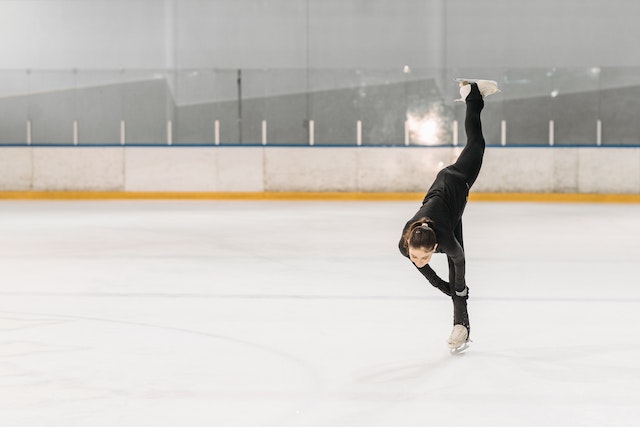
Why does ice have so little friction? Because there is a very thin layer of water on top of the ice. Although, the reason for that is not completely understood.
If a force is applied to an object it picks up kinetic energy. The kinetic energy is transferred from the energy used to make the force. For example, if you kick a soccer ball, the kinetic energy in the ball comes from the energy in your muscles. If you kick a soccer ball in space, it will move indefinitely because there is nothing to remove the energy and slow it down. There is no friction in space. If you kick a soccer ball on Earth, it will move for a while, slow down, and then stop. This is because of the friction on Earth. The soccer ball on Earth and the soccer ball in space both have the same amount of energy applied to them by your leg. The difference is the soccer ball on Earth comes into contact with the ground. Even very flat surfaces have lots of bumps if you look at them under a microscope and these bumps collide with each other. Every time a part of the soccer ball collides with part of the ground, some of the kinetic energy is converted into thermal energy and the ball slows down. Once all of the kinetic energy has been converted into heat, the ball stops.
Different objects have different amounts of friction. A vacuum has zero friction because there are no molecules for an object to collide with. Space is not technically a total vacuum because a square meter of space has 0.25 atoms in it. That is not enough to reduce the speed of an object flying through space but, if given long enough, it could slow the object down ever so slightly. On Earth, we know that ice has very low friction. Cars slide on ice on the winter and we can be pretty sure we’ll fall over if we walk on an ice rink in regular shoes. So, why does ice have such low friction?
Ice has very low friction because there is a very thin layer of water on top of the ice. When something moves across the ice, the thin layer of water provides a cushion, keeping the molecules of the thing sliding on the ice away from the molecules in the ice. They can’t be kept apart forever, but the water keeps them apart long enough for the object to slide farther than it would on a regular surface. Where does this layer of water come from?
The first person to consider the problem was an Irish physicist called John Joly in 1886 and he thought it was due to pressure. He though that the pressure of the ice skate, or the person standing on the ice was so great that it melted the ice, creating a thin layer of water that lowered the friction. The problem with this theory is that not even the heaviest person on Earth standing on an ice skate would create enough pressure to melt ice. The second theory, shortly after the first, was that friction melts the ice. As an object slides across the ice, the friction creates heat and this heat melts the ice, lowering the friction.
Both of these theories were not quite correct because the layer of water that reduces the friction of ice is always there. It is a part of the ice but that couldn’t be proven until 1987. The layer of water on top of the ice is between 1 and 94 nanometers thick, which is almost invisible. It is caused by the structure of the ice. When the water freezes, the water molecules lose their energy and connect to each other with rigid bonds. Each layer of molecules is connected to the ones above it and the ones below it. The molecules at the bottom are connected to the molecules of the floor. However, the molecules at the very top of the ice are only connected to the molecules below them because there are no water molecules above them. This makes them less rigid than the other molecules and more able to move around. They are less rigid and have more of the properties of water than of ice. This is the water layer at the very top of the ice and is the reason why ice has low friction. And this is what I learned today.
Photo by Pavel Danilyuk: https://www.pexels.com/photo/a-young-woman-ice-skating-doing-the-standing-split-6539437/
Sources
https://testbook.com/physics/friction
https://study.com/learn/lesson/friction-function-types-motion.html
https://socratic.org/questions/how-many-atoms-are-in-the-average-cubic-square-of-interstellar-space
https://www.vox.com/science-and-health/2018/2/13/16973886/why-is-ice-slippery
https://phys.org/news/2018-05-slipperiness-ice.html
